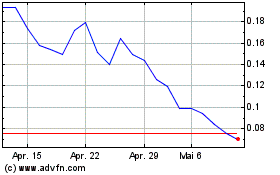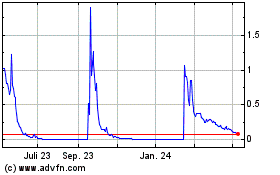New Data from the Open-Label PLEO-CMT-FU Trial Shows Sustained
Benefit with PXT3003 in Patients with Charcot-Marie-Tooth Disease
Type 1A After 5 Years of Total Trial Time
New Data
from the Open-Label PLEO-CMT-FU
Trial Shows Sustained Benefit
with PXT3003 in
Patients with Charcot-Marie-Tooth Disease Type 1A
After 5 Years of Total Trial Time
- New data from the ongoing
Open-Label Phase III Extension Study of PXT3003, the PLEO-CMT-FU
trial, suggest good safety profile and continuous treatment effect
of PXT3003 measured on the Overall Neuropathy Limitation Scale
after 5 years of total trial time
- 126 patients with mild-to-moderate
Charcot-Marie-Tooth Disease Type 1A are still on treatment with
PXT3003 High Dose in the PLEO-CMT-FU trial
PARIS,
France, May
16th,
2022,
8:30
am CET
– Pharnext SA (FR0011191287
– ALPHA) (the “Company”), an
advanced late-clinical stage biopharmaceutical company developing
novel therapeutics for neurodegenerative diseases with high unmet
medical need, today announces new results from the ongoing
open-label follow-up extension study of PXT3003 in
Charcot-Marie-Tooth Disease Type 1A (‘CMT1A’), the PLEO-CMT-FU
trial, which followed the first double-blind, placebo controlled
Phase III study, the PLEO-CMT trial.
In January 2020 and
April 2021, Pharnext reported results, based on previous data
extraction from the PLEO-CMT and PLEO-CMT-FU trials, suggesting
sustained safety and efficacy of PXT3003 in patients with
mild-to-moderate CMT1A. The new results announced today are derived
from a data extraction performed on April 25th, 2022, which shows
the continuous treatment effect for CMT1A patients treated with
PXT3003 High Dose (‘HD’) in the PLEO-CMT-FU Period 2 trial with a
data readout at 60 months of total trial time (15 months of
PLEO-CMT trial + 9 months of PLEO-CMT-FU trial period 1 + 36 months
of PLEO-CMT-FU trial period 2). Please refer to an illustration of
the first PXT3003 Phase III program design in the “About the
PLEO-CMT-FU Trial” section below for more details.
Key features of the
data analysis are as follows:
- PXT3003 continues to show a good
tolerability and safety profile over the course of the first Phase
III program (double-blind + ongoing open-label).
- PXT3003 continues to show
encouraging efficacy results as measured on the Overall Neuropathy
Limitations Scale (‘ONLS’) which evaluates the patient’s functional
motor disability.
- The best efficacy signal was
observed in the cohort of patients treated with PXT3003 HD during 5
years of total trial time (double blind + ongoing open-label).
- Patients treated with placebo
declined on ONLS during the double-blind phase but then improved
when switched to PXT3003 in the ongoing open-label phase.
Please refer to the
illustration of the ONLS data below for more details.
Dr. Burkhard
Blank, Chief Medical Officer at Pharnext commented: “The
data announced today, while generated from an open-label extension
study, show a sustained treatment benefit with PXT3003 High Dose
for patients with CMT1A. As we approach completion of enrollment in
our pivotal Phase III study, the PREMIER trial, in the same mild to
moderate CMT1A patients’ population, with the same High Dose of
PXT3003 and using the same primary efficacy ONLS endpoint, this
reinforces our confidence in potentially confirming the safety and
efficacy of PXT3003.”
Shahram
Attarian, MD, PhD, Head of the Neuromuscular Diseases and ALS
department at the University Hospital La Timone in Marseille
(France), Coordinator of the FILNEMUS Rare Diseases Network and
Neuromuscular Diseases Reference Centers in France, and Lead
Investigator of the PLEO-CMT, PLEO-CMT-FU
and PREMIER
trials in Europe,
said: “As an investigator involved since the beginning in
the clinical development of PXT3003 in CMT1A, I find these long
term safety and efficacy data very encouraging. Being able to
stabilize, or even improve, patients with CMT1A is an extremely
worthwhile goal particularly as these individuals will inevitably
decline following the long-term natural course of the disease with
the currently available standard of care. The entire CMT community
is hopeful that PXT3003 could be the first approved therapy for
this debilitating disease.”
Results of First Double-Blind Phase III
(PLEO-CMT) & Open-Label Extension (PLEO-CMT-FU)
Studies of PXT3003 with an ONLS Data Readout at 60 Months
of Total Trial Time*
*Results based on database extraction done on
April 25th, 2022a Cohort of CMT1A patients treated with PXT3003
High Dose during PLEO-CMT and ongoing PLEO-CMT-FU trialsb Cohort of
CMT1A patients treated with PXT3003 Low Dose during PLEO-CMT +
PLEO-CMT-FU Period 1, and then switched to PXT3003 High Dose during
PLEO-CMT-FU period 2c Cohort of CMT1A patients treated with placebo
during PLEO-CMT, PXT3003 Low Dose or High Dose during PLEO-CMT-FU
Period 1 and PXT3003 High Dose during PLEO-CMT-FU Period 2Please
refer to a graphic illustration of the first double-blind Phase III
(PLEO-CMT) and open-label extension (PLEO-CMT-FU) studies design in
the “About the PLEO-CMT-FU Trial” section below.
About the PLEO-CMT Trial
The PLEO-CMT trial was an international,
randomized, double-blind, placebo-controlled, Phase III study
evaluating the efficacy and safety of PXT3003 in patients with
CMT1A, over a 15-month period. Two dose levels, named low dose
(‘LD’) and high dose (‘HD’), of PXT3003 in comparison to placebo
were tested in patients diagnosed with mild-to-moderate CMT1A (HD
equals double LD). A total of 323 patients were enrolled in 29
centers across Europe, the U.S. and Canada by December 2016 and
last-patient-last-visit occurred in March 2018. Due to an
unexpected issue in the HD formulation, the HD arm was prematurely
stopped in September 2017. A revised statistical analysis plan was
developed to take into account the premature HD arm
discontinuation. Analysis of the primary endpoint, Overall
Neuropathy Limitations Scale (‘ONLS’) from all investigated
populations in the HD arm suggested preliminary efficacy in humans.
The study further demonstrated the safety and tolerability of
PXT3003. Further information on the PLEO-CMT trial, including study
results, can be found on the ClinicalTrials.gov website (study
identification number: NCT03023540) here or in the following
publication:
https://ojrd.biomedcentral.com/track/pdf/10.1186/s13023-021-02040-8.pdf.
About the PLEO-CMT-FU
Trial
All randomized CMT1A patients who completed the
PLEO-CMT trial (treated with PXT3003 or placebo) were eligible to
pursue treatment with PXT3003 in the PLEO-CMT-FU trial. This trial
enrolled a total of 187 patients and was designed to primarily
assess the long-term safety and tolerability of PXT3003. It was
initially planned to be a double-blind, nine-month, Phase III
follow-up extension study where patients treated with PXT3003 in
the PLEO-CMT trial were eligible to continue their treatment at the
same dose (High dose ‘HD’ or Low Dose ‘LD’). Patients treated with
placebo in the PLEO-CMT trial were randomized in PLEO-CMT-FU to
receive LD or HD of PXT3003. Due to the PXT3003 HD formulation
issue which occurred during the PLEO-CMT trial, the HD arm was
discontinued in September 2017. Consequently, the PLEO-CMT-FU trial
became an open-label study divided into two periods:
- Period 1 (9-month treatment period)
from March 2017 to April 2019. Patients randomized to PXT3003 LD in
PLEO-CMT continued on the same dose. Patients randomized to PXT3003
HD in PLEO-CMT continued on the same dose, but it was given as
twice the volume of PXT3003 LD formulation after the PXT3003 HD
formulation issue. Patients randomized to placebo in PLEO-CMT
continued only on PXT3003 LD after the HD formulation issue.
- Period 2 from July 2018 (still
on-going). The 153 patients who entered in PLEO-CMT-FU Period 2
were all switched to PXT3003 HD given as twice the volume of
PXT3003 LD formulation.
In PLEO-CMT-FU, on top of safety and
tolerability of PXT3003 which is evaluated every 3 months,
long-term efficacy is evaluated with the Overall Neuropathy
Limitations Scale (‘ONLS’) measured every 6 months. Results from
the PLEO-CMT-FU trial will be reported on a yearly basis.Further
information on the PLEO-CMT-FU trial can be found on the
ClinicalTrials.gov website (study identification number:
NCT03023540) here.
Design of First
Double-Blind Phase III (PLEO-CMT)
and Open-Label Extension (PLEO-CMT-FU) Studies of
PXT3003
About the
PREMIER TrialThe PREMIER trial is an international,
randomized, double-blind, two-arm placebo-controlled, pivotal Phase
III study, evaluating the efficacy and safety of PXT3003 versus
placebo in mild-to-moderate CMT1A patients, over a 15-month period.
The dose of PXT3003 tested in the PREMIER trial corresponds to the
high dose (‘HD’) tested in the prior Phase III trial (‘PLEO-CMT’).
As agreed with regulatory agencies, the primary efficacy endpoint
will be the Overall Neuropathy Limitations Scale (‘ONLS’) which
measures functional motor disability. The secondary endpoints
include the following outcome measures: 1) 10-Meter Walk Test
(‘10mWT’), 2) Quantified Muscular Testing (bilateral foot
dorsiflexion dynamometry), 3) Patient Global Impression of Severity
(‘PGI-S’), 4) Patient Global Impression of Change (‘PGI-C’), 5)
Charcot-Marie-Tooth Neuropathy Score, version 2 (‘CMTNS-v2’), and
6) Quantified Muscular Testing (hand grip). Safety and tolerability
will be monitored throughout the study. Further information on the
PREMIER trial can be found on the ClinicalTrials.gov website (study
identification number: NCT04762758) here.
About
Charcot-Marie-Tooth Disease Type 1A
(‘CMT1A’)Charcot-Marie-Tooth (‘CMT’) disease encompasses a
heterogeneous group of inherited, severe, debilitating, progressive
and chronic peripheral neuropathies. CMT1A, the most common type of
CMT, is an orphan disease with a prevalence of 1/5000 people
affecting about 150,000 people in Europe and the U.S. and about
1,500,000 people worldwide. The genetic mutation responsible for
CMT1A is a duplication of the PMP22 gene coding for a peripheral
myelin protein. The duplication of this gene results in
overexpression of the PMP22 protein and failure of Schwann cells to
produce normal myelin (neuronal sheath). The lack of a normal
myelin structure and function leads to abnormal peripheral nerve
conduction and axonal loss. As a result of peripheral nerve
degradation, patients suffer from progressive muscle atrophy in
both the legs and arms causing problems with walking, running and
balance as well as abnormal hand functioning. They might also
suffer from mild to moderate sensory disorders. First symptoms
usually appear during adolescence and will progressively evolve
throughout life. Patients with the most severe form of CMT1A end up
in wheelchairs, representing at least 5% of cases. To date, no
curative or symptomatic medications have been approved and
treatment consists of supportive care such as orthotics, leg
braces, physical and occupational therapy or surgery. More
information can be found at
https://pharnext.com/en/disease/charcot-marie-tooth
About
PXT3003PXT3003 is a novel fixed-dose synergistic
combination of baclofen, naltrexone and sorbitol formulated as an
oral solution given twice a day. The three individual components of
PXT3003 were selected to downregulate the overexpression of PMP22
protein, leading to improvement of neuronal signaling in
dysfunctional peripheral nerves that are an essential part of the
pathophysiology of this disease. PXT3003 could also have a positive
effect on other cellular types of the motor unit such as the axon
(direct protection), neuromuscular junctions or muscle cells.
PXT3003 has shown promising and consistent results across
preclinical and clinical studies in Phase II and Phase III
(PLEO-CMT and PLEO-CMT-FU). More information can be found at
https://pharnext.com/en/pipeline/pxt3003
About PharnextPharnext is an
advanced clinical-stage biopharmaceutical company developing novel
therapeutics for neurodegenerative diseases that currently lack
curative and/or disease-modifying treatments. Pharnext has two lead
products in clinical development. PXT3003 completed an
international Phase III trial with encouraging topline results for
the treatment of Charcot-Marie-Tooth disease type 1A (‘CMT1A’) and
benefits from orphan drug status in Europe and the United States.
An international pivotal Phase III study of PXT3003 in CMT1A, the
PREMIER trial, is currently ongoing. PXT864 has generated
encouraging Phase II results in Alzheimer’s disease and will be
advanced through partnerships. Both of Pharnext’s lead assets
originated from the Pleotherapy™ R&D approach. Pharnext draws
the attention of investors to the financial and other risk factors
detailed in its financial reports. More information can be found at
https://pharnext.com/enPharnext is listed on the Euronext Growth
Stock Exchange in Paris (ISIN code: FR0011191287).
Please click HERE to find the press release
in French.
Contacts
|
Dr. David Horn SolomonChief Executive
Officercontact@pharnext.com+33 (0)1 41 09 22 30 |
|
|
|
Media Relations (International)Consilium Strategic
CommunicationsMary-Jane ElliottSukaina Virji Alexandra Harrison
pharnext@consilium-comms.com |
Financial Communication
(Europe)ActifinGhislaine
Gasparettoggasparetto@actifin.fr +33 (0)6 21 10 49 24 |
Media Relations (France)Ulysse CommunicationBruno
Arabianbarabian@ulysse-communication.com+33 (0)6 87 88 47 26 +33
(0)1 81 70 96 30 |
Pharnext (EU:ALPHA)
Historical Stock Chart
Von Dez 2024 bis Jan 2025

Pharnext (EU:ALPHA)
Historical Stock Chart
Von Jan 2024 bis Jan 2025
